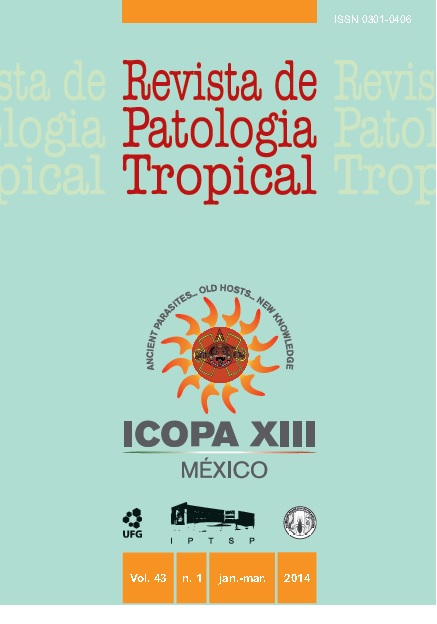SPECIES DISTRIBUTION AND ANTIFUNGAL SUSCEPTIBILITY OF YEASTS ISOLATED FROM VAGINAL MUCOSA
DOI:
https://doi.org/10.5216/rpt.v43i1.29371Palavras-chave:
Candida spp., Vulvovaginal candidiasis, drug susceptibilityResumo
Aims: Vulvovaginal candidiasis is one of the most common complaints in the medical clinic. In recent years, due to the increasing frequency of non-albicans species, the number of cases of therapeutic failure has increased considerably, generating the need for research to learn the profile of yeasts isolated in vulvovaginal candidiasis. The aims of this study were to collect samples of vaginal secretion, verify the presence of yeast, identify the species of yeast, and verify their in vitro susceptibility profile against six antifungal agents – amphotericin B, nystatin, fluconazole,itraconazole, ketoconazole and voriconazole. Materials and Methods: Vaginal secretion was collected from 130 patients with symptoms characteristic of vulvovaginal candidiasis (VVC). For amphotericin B, fluconazole, itraconazole, ketoconazole and voriconazole, the in-vitro tests were carried out using the commercial Etest susceptibility testing kit; for nystatin the disk diffusion method was used. Results: The yeasts isolated were: Candida albicans (90%), C. glabrata (5%), C. parapsilosis (3%) and C. tropicalis (2%). By the CLSI method, all the isolates were susceptible to
fluconazole, ketoconazole, nystatin and voriconazole. Tests showed that 98.8% of the isolates were susceptible to amphotericin B and 97.6% to itraconazole. Conclusion: Although a high number of resistant strains were not found, these studies may help guide physicians to the most convenient therapeutic orientation, conducting treatment specific to the identified yeast species.
Downloads
Downloads
Publicado
Como Citar
Edição
Seção
Licença
The manuscript submission must be accompanied by a letter signed by all authors stating their full name and email address, confirming that the manuscript or part of it has not been published or is under consideration for publication elsewhere, and agreeing to transfer copyright in all media and formats for Journal of Tropical Pathology.

